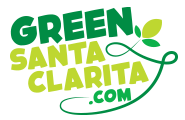Tips for a Green Neighborhood
Smart Gardening Workshops & Composting Info
 Composting is nature’s way of recycling. It is the biological decomposition of organic debris such as leaves, grass clippings, fruit and vegetable trimmings and other organic material commonly found in the trash. Compost refers to the stable humus or soil-like product of decomposition.
Composting is nature’s way of recycling. It is the biological decomposition of organic debris such as leaves, grass clippings, fruit and vegetable trimmings and other organic material commonly found in the trash. Compost refers to the stable humus or soil-like product of decomposition.
Home composting is another way Santa Clarita residents can reduce their waste, save resources and protect valuable landfill space. Composting is the optimum way to turn organic materials into a nutrient-rich soil amendment. Soil conditioned with compost drains better, needs less irrigation and resists surface crusting and erosion.
In Santa Clarita, a significant amount of the garbage disposed of annually is organic green waste. To get more information about how you can compost and find out how to attend a free Smart Gardening Workshop, please visit www.smartgardening.com.
Fire Safe and Sustainable Landscapes
Trails
The trails are calling for you! Explore more than 60 miles of picturesque trails and paseos in Santa Clarita designed for commuting and recreational use, including walking, running, biking, and skating. Help reduce carbon emissions, traffic, and your gasoline costs by utilizing our local trail system.
For a trail map and more information go to: HikeSantaClarita or BikeSantaClarita
Think Green When You Clean
Take the extra step to go green when you clean by using eco-friendly cleaning products and finding a new life for items you no longer need.
Many common cleaning products are hazardous to the environment when flushed or thrown away and, according to the Environmental Protection Agency (EPA), fumes from household cleansers and other products may make indoor air in the typical home two to five times more polluted than the air outside. Today, many cleaning products have reduced toxins and are made with natural ingredients. And you don’t need to go to a specialty store to get them. Many of these less harmful cleaning products can be found at your local grocery store or retail chain.
Green cleaning products can also be made at home using baking soda or vinegar and lemon juice. Some examples include:
- Baking soda can be used as a gentle, non-abrasive cleaner for kitchen counter tops, sinks, bathtubs, ovens, and fiberglass. It is a useful air freshener and carpet deodorizer. Because it neutralizes or absorbs odor, baking soda can also be added to litter boxes, left open in the refrigerator or freezer, or included with laundry detergent.
- When white vinegar is mixed in equal parts with salt, it removes mildew, and added to water it is a good floor cleaner. Used straight, white vinegar can remove stains from the coffee pot, and is a good fabric softener.
For more tips, and to search for safer choice products, visit the EPA website at https://www.epa.gov/environmental-topics/greener-living
Don’t Trash It, Donate It!
Before you recycle or trash any unwanted items, see if they can be reused. Whether it’s clothing, sporting goods, furniture or even a car, your discarded items could be the key to brightening someone else’s day.
Check with your favorite charities or local thrift shops to see if they can put your donated items to good use. If you would like suggestions on local donation resources, submit a request through our Resident Service Center under the other trash and recycling category.
________________________________________________________________________________
Great Guide to Food and Water Use
Most of us don’t think much about how food and water are connected. Click on the link below to view a guide that will walk you through the process to make it all make sense.


